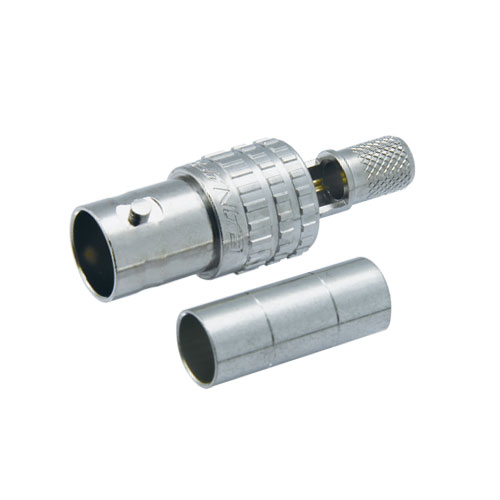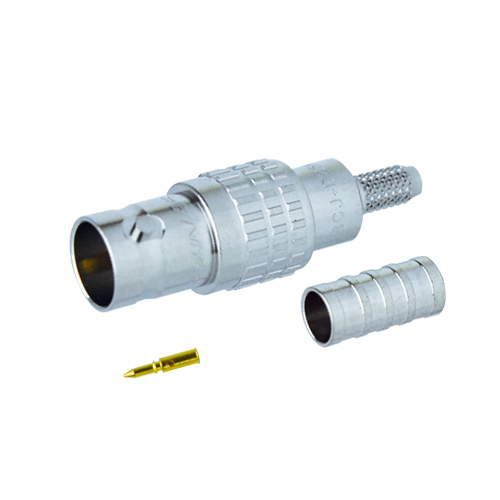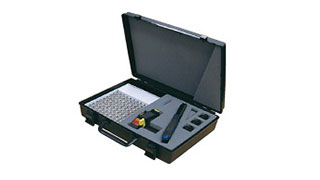75 ohm BNC Jack Plug
BNC Jack Plug for extension cables.
Key Features and Benefits
- Beryllium copper (gold plated) is used on the center contact for its superior spring characteristics (Center contact: solder).
- Note:
- Be sure to use Canare Crimp Tool
- Note:
- For crimping instructions, please refer to this page or the instruction manual.
- Note:
- BCJ-C4 not support 12G-SDI
- Tech Data
- Tech Note
- Downloads
75 ohm BNC Jack Plug12G-SDICrimp Type
| Type | Model | Suitable Cable | Center Pin | Sleeve | Boot | Die Set | Standard package |
|---|---|---|---|---|---|---|---|
| No image | BCJ-D25HD | L-2.5CHD | BN1204 | BN7159 | - | TCD-D253F | 20pcs |
 |
BCJ-D25HW | L-2.5CHWS | BN1204 | BN7158 | - | TCD-D253F | 20pcs |
| No image | BCJ-D33UHD | L-3.3CUHD | BN1205 | BN7003A | - | TCD-D253F | 20pcs |
Key Features and Benefits
- Return loss for BCJ-D: 20 dB @ 3 GHz, 15 dB @ 6 GHz, 10 dB @ 12
- Gold plated beryllium copper center contact.
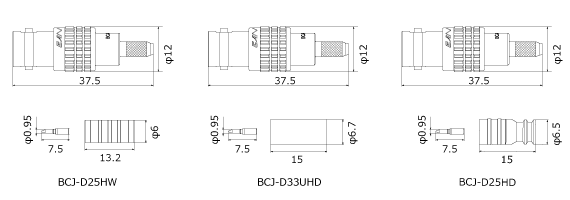
75 ohm BNC Jack PlugCrimp Type
| Type | Model | Suitable Cable | Center Pin | Sleeve | Boot | Die Set | Standard package |
|---|---|---|---|---|---|---|---|
 |
BCJ-C4 | RG-59 B/U, LV-61S, Belden 8241, 8279, 88241 |
Solder | V75001 | CB25 | TCD-4CA TCD-451CA |
20pcs |
Key Features and Benefits
- Return loss for BCJ-C: 26.4 dB @ 1.5 GHz, 20.8 dB @ 2.4 GHz

Technical Note
Voltage Standing - wave Ratio (VSWR) and Return Loss
Terminating the receiving end of a limited length coaxial cable using a resistance value not equal to its characteristic impedance creates a reflected wave that returns back down the cable to the sending end. The result is interference developing between the travelling wave and the return wave which results in a standing wave that causes voltage levels to fluctuate. The degree to which terminating resistance matches the characteristic impedance is indicated using the VSWR or voltage standing-wave ratio standard shown in Fig. 1. Going hand in hand with the VSWR ratio is the return loss factor which measures the size of the reflected wave current in relation to the travelling wave current. (See Fig. 2)
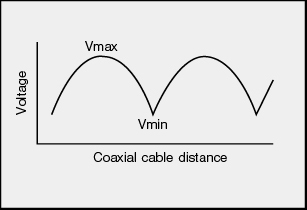
Fig. 1 Voltage Distribution Over Coaxial Cable
| VSWR | Return Loss (dB) |
|---|---|
| 2 | 9.54 |
| 1.5 | 13.98 |
| 1.2 | 20.83 |
| 1.1 | 26.44 |
| 1.05 | 32.26 |
| 1.02 | 40.09 |
| 1.01 | 46.06 |
Fig. 2 VSWR to Return Loss Conversion Table
